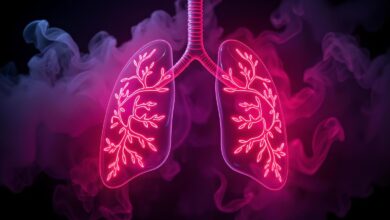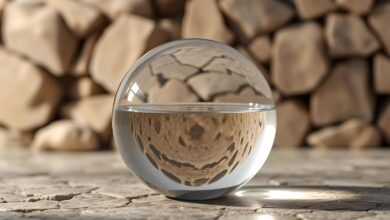Thirst Aid Kit: How to Hydrate Fast When It Matters Most
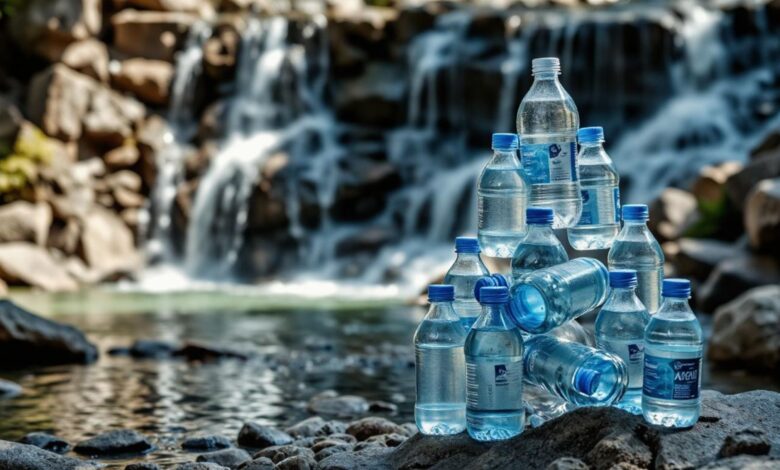
Whether it’s a sweaty workout, a scorching summer day, or battling a fever, all these can drain your body of fluids and lead to dehydration. This happens when you lose more water than you take in, making it harder for your body to function properly. Symptoms like headaches, dizziness, and fatigue are common signs of dehydration. That’s why staying ahead of the game and knowing how to hydrate fast before these symptoms appear is so important.
Water is a superstar for keeping your body running smoothly. It helps regulate temperature, supports joint health, prevents infections, and might even boost your lifespan. But when dehydration strikes, rehydrating fast is the key. Staying hydrated isn’t just about quenching thirst; it’s about keeping your body in peak performance mode!
Thirsty Work: The Secret Life of Water in Your Body
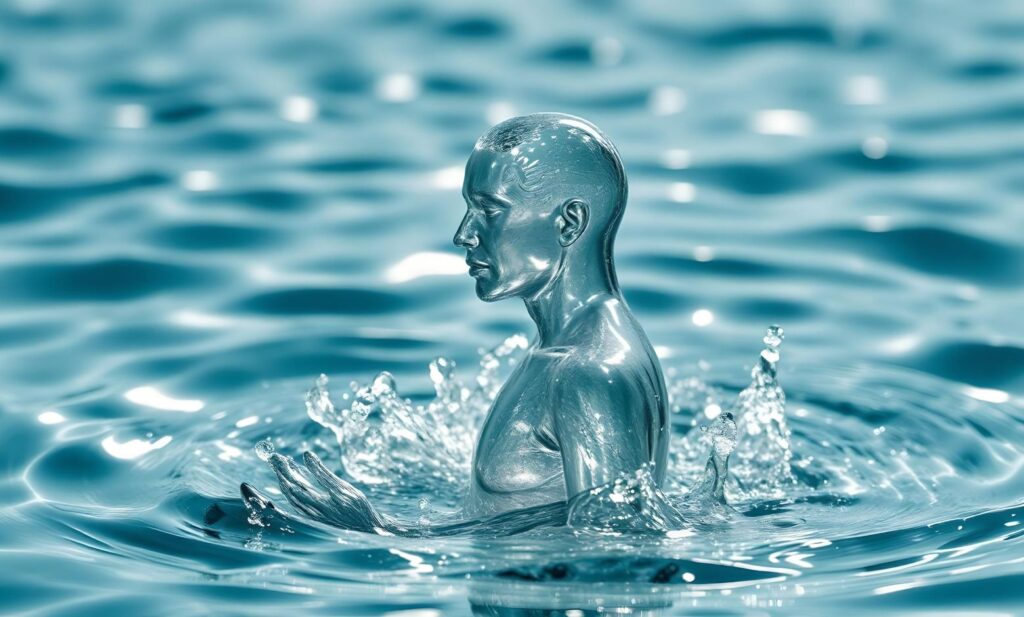
Water is essential for your body—it’s involved in almost everything, from keeping you cool and carrying nutrients to flushing out waste and helping your brain work. Staying hydrated is a big deal for your health, but here’s the kicker: about one-third of adults (ages 18–64) and over half of kids and teens (ages 6–19) in the U.S. aren’t drinking enough water, according to surveys.
Dehydration isn’t just about feeling thirsty—it can mess with your focus, decision-making, and even your mood. When you’re low on water (losing more than 2% of your body weight in fluids), you might feel cranky, confused, or flat-out tired. It’s not fun.
Experts recommend drinking 2–2.7 liters of water daily for women and 2.5–3.7 liters for men.
Following the advice above helps maintain hydration, which is all about balancing water coming in versus water going out.
Here’s how it works:
- Hydration = you’re in balance.
- Dehydration = losing water faster than you’re replacing it.
- Rehydration = topping off your water levels again.
Normally, your body can handle tiny water losses (less than 2% of your weight), but anything more than that? That’s called hypohydration and can start causing real problems. So, keep that water bottle handy and drink up—your body (and brain) will thank you!
Why We Get Dehydrated (and Who’s’ Most at Risk)

Dehydration can sneak up on you for pretty simple reasons—like being too busy to grab a drink, not having safe water while traveling, or adventuring outdoors. But there are some bigger culprits to watch out for:
- Tummy Troubles: Intense diarrhea or vomiting can drain your body of water and electrolytes super fast. Combine the two, and you’re in double trouble.
- Fevers: The higher the fever, the more fluids you’ll lose. Add diarrhea or vomiting to the mix, and dehydration becomes even more likely.
- Sweat Sessions: Vigorous exercise or being out in the heat means you’re sweating—and losing water. Humidity makes it worse since sweat doesn’t cool you down as efficiently.
- Frequent Bathroom Breaks: Uncontrolled diabetes or meds like diuretics can lead to extra urination, which means extra fluid loss.
Anyone can get dehydrated, but some groups have it tougher:
- Kids and Babies: Little ones are prone to dehydration because of their tiny bodies. Diarrhea, vomiting, or a fever can quickly throw them off balance. Plus, they might not always tell you when they’re thirsty.
- Older Adults: Aging comes with a smaller “fluid reserve,” weaker thirst cues, and issues like mobility problems or chronic illnesses (e.g., diabetes or dementia) that make staying hydrated harder.
- Chronic Illness Warriors: Diabetes, kidney problems, and medications that cause extra peeing can all up your dehydration risk. Even a sore throat can leave you feeling too crummy to eat or drink.
- Outdoor Enthusiasts: Working or exercising in the heat, especially in humid weather, means you’re sweating more and cooling off less efficiently, which ups your need for hydration.
Feeling Dehydrated? Here’s How to Hydrate Quickly
Dehydration can sneak up on you. First, you might feel super thirsty or get a headache. Your mouth or skin might feel like a desert, and your pee could turn darker because your body’s trying to hold on to every drop of water.
For mild dehydration, the fix is simple: drink up! But if it gets worse—like confusion, fainting, or a racing heartbeat—it’s a medical emergency. At that point, sipping water won’t cut it, and you might need IV fluids to get back on track.
So, what’s the plan for mild dehydration?
Option one: plain water
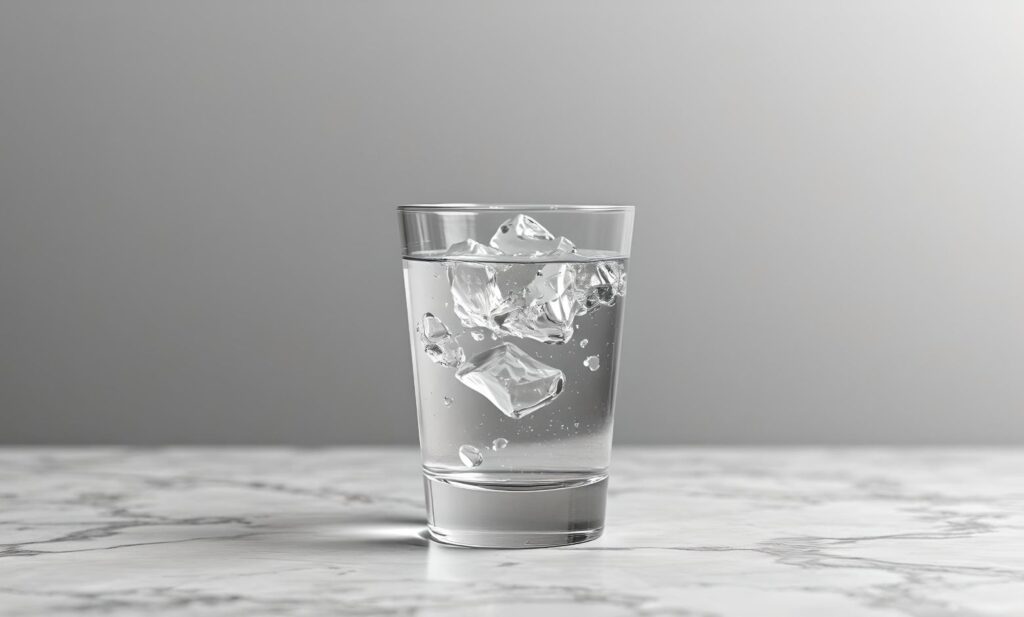
First things first: plain old water is your best buddy. It’s cheap, easy to find, sugar-free, and gets the job done. Research shows that the amount of fluid you drink matters most, especially after exercise. Pro tip: stick to water between 10°C and 40°C for maximum refreshment!
If you’re feeling dehydrated, don’t chug a whole liter at once—it’s tempting, but trust us, your stomach won’t thank you. Instead, sip slowly. A cup at a time lets your body catch up without causing nausea or other unpleasant surprises.
How long does it take? For mild dehydration, your body can bounce back in about 45 minutes with around 600 mL of water. But if it’s more severe, recovery takes longer—and you might need medical attention to fully rehydrate.
Option two: sports drinks and oral rehydration solutions
When you’re dehydrated, it’s not just water you’re missing—you’re also losing important electrolytes like sodium, potassium, calcium, and magnesium. These minerals are key players in keeping your muscles moving, nerves firing, and fluid levels balanced.
For a quick fix, oral rehydration solutions are a great option. They’re powders you mix with water, packed with potassium, sodium, and glucose to help your body bounce back. If you’re wondering how to hydrate fast when sick, these solutions can be especially helpful in replenishing lost fluids and electrolytes. Another option? Sports drinks are designed to replace the electrolytes and fluids you lose when you sweat during exercise or in hot weather.
Here’s a quick cheat sheet for these solutions:
- Hypotonic solutions: Low in electrolytes and carbs, they absorb super quickly—perfect for rehydration.
- Isotonic solutions: Match your body’s electrolyte levels; great for steady rehydration during exercise.
- Hypertonic solutions: Higher in concentration than your body’s fluids—not ideal if you’re trying to hydrate fast since they absorb slower.
Wondering how to hydrate yourself fast? Go for hypotonic solutions—they get absorbed by your bloodstream faster, helping you recover quicker. Just keep an eye on the labels: some sports drinks are loaded with sugar, calories, or artificial sweeteners that might not do you any favors.
So, should you ditch water for sports drinks? Not necessarily. Sports drinks can be helpful after intense activity or sweating buckets, but plain old water still works wonders for most situations. Know your options, sip smart, and keep those electrolytes in check!
Option three: fruit juices and smoothies
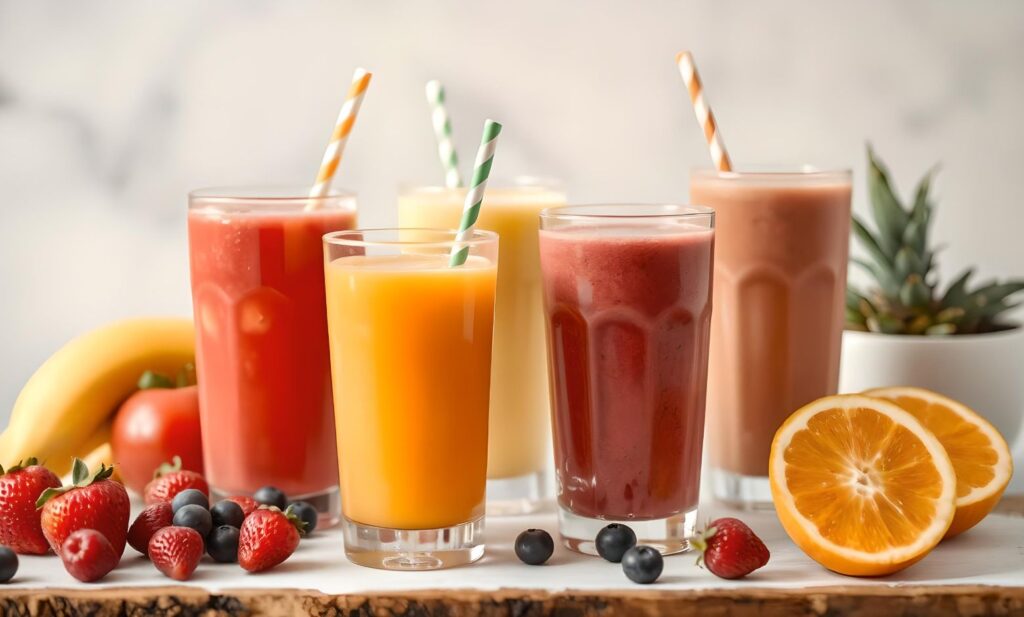
Fruit juices and smoothies (like orange or apple juice) are fantastic for staying hydrated—they’re packed with water, vitamins, and minerals. Plus, they’re delicious! To avoid undoing the benefits, keep an eye out for added sugars. Also, drinks like 100 percent orange juice, green juices, or berry blends deliver antioxidants, potassium, and vitamin C. In fact, research suggests that 100 percent orange juice orange juice contributes to hydration as well as water does.
If you’re wondering how to hydrate fast at home, add a splash of juice to your water or make fruit juice ice cubes to jazz up your drink. Coconut water and watermelon juice are also excellent choices, as they’re loaded with natural electrolytes and water.
Whole fruits like watermelon, cantaloupe, and honeydew are hydration champs, with over 90 percent water content per serving. Pop them in the fridge or freezer for a cool, refreshing treat, especially if dehydration has left you overheated or feeling queasy.
Option four: milk
When it comes to how to hydrate your body fast, milk might not be the first thing you think of—but it absolutely can! A glass of milk packs a punch with fluids, protein, carbs, and electrolytes. Thanks to its small amount of sodium, it even helps your body hold onto liquids better. Whether you’re recovering after a workout or just need to cool down, milk is a refreshing, nutrient-rich choice.
Milk naturally contains electrolytes like calcium and potassium, which help balance your body’s water levels. Studies have shown that skim and milk-based beverages can rehydrate you just as effectively as sports drinks, all while delivering protein to aid muscle recovery. But if you’re lactose intolerant or dealing with stomach troubles like diarrhea, milk might not be your best option and could even make symptoms worse.
Option five, totally unexpected: a beer?

Beer might not scream “healthy beverage,” but its ingredients—water, barley, hops, and yeast—are surprisingly nutrient-packed. These natural goodies provide carbs, protein, fiber, vitamins, minerals, and even electrolytes. Thanks to the fermentation process, these nutrients become more bioavailable, meaning your body can absorb and use them more easily.
Interestingly, a study looked into how well beer hydrates after exercise-induced dehydration. Participants tried alcohol-free beer and beers with 1%, 2%, and 4% alcohol by volume (ABV). The findings? Beers with low alcohol content (around 2% ABV) had almost no diuretic effect, hydrating just as well as water. Even the 4% ABV beer worked, though it took a bit longer to do the job.
But before you start stocking up on brews for your next hydration strategy—don’t. While the study makes for an interesting conversation, alcohol is not a reliable or recommended way to rehydrate, even if it’s a low-alcohol beverage. Stick to water or proven hydration methods to keep your body in top shape!
What to Skip When You’re Dehydrated
Trying to rehydrate? Step away from the booze. Alcohol blocks vasopressin, the hormone that helps your kidneys hold onto fluid, so instead of hydrating, it makes you pee more—speeding up fluid loss and making dehydration worse.
Nicotine and dehydration also go hand in hand, messing with your body’s fluid and electrolyte balance in sneaky ways. Even vaping nicotine-free liquids isn’t a solution—studies show that the chemicals and flavors in these liquids can cause health issues, from messing with your vital signs to affecting reproductive health.
When it comes to dehydration, there isn’t much research comparing cigarettes and vaping directly. But one thing’s for sure: vaping isn’t the harmless alternative to smoking that people once believed. So whether you’re lighting up or puffing clouds, your hydration levels might take a hit.
Coffee and caffeinated drinks like tea, soda, and energy drinks are another “meh” option. While coffee in moderation (3–4 cups a day) won’t dehydrate you, too much caffeine can tip the scale if you’re already low on fluids.
Lastly, watch out for super sugary drinks like colas. These aren’t as hydrating as water or lower-sugar drinks. Why? Their high sugar content can slow things down in your stomach and, once in the small intestine, trigger a process called osmosis. That’s when water gets pulled from your body into the intestine to dilute the sugar—so, technically, your body loses even more water. Stick to simpler, less sugary options to hydrate fast and effectively!
Tip-Top Tips To Drink More Water Every Day
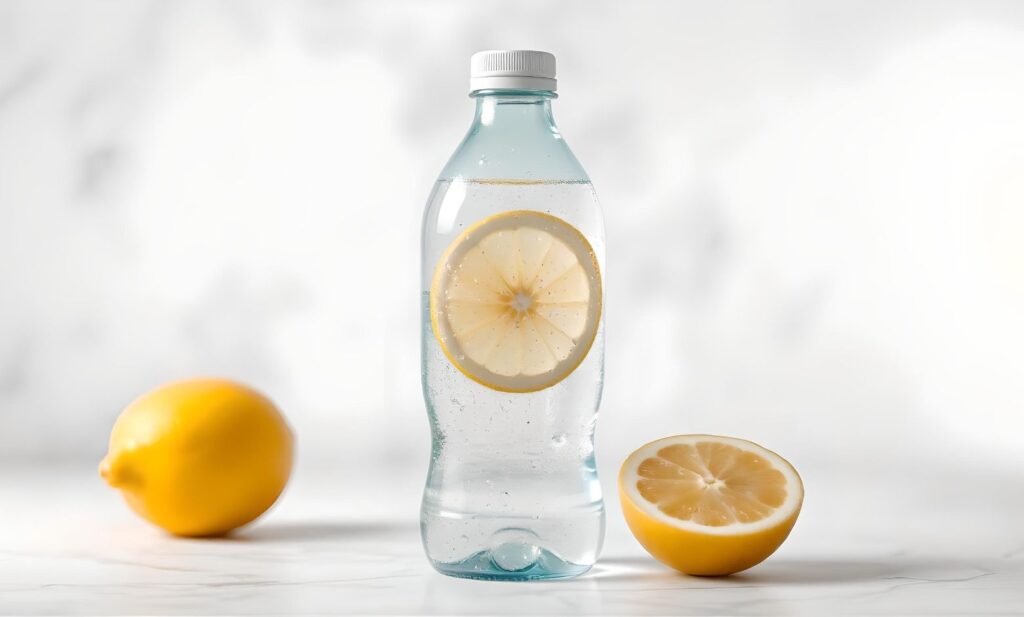
Staying hydrated sounds simple, but let’s be real—it’s easy to forget to drink enough. Here are some fun and practical tips to boost your daily water intake.
Where to start?
- Always Have a Bottle Handy: Keep a water bottle with you and make it your sidekick. Refill it whenever it’s empty!
- Skip Sugary Drinks: Choose water instead of soda or juice, even at meals.
- Add a Little Flavor: Drop in a slice of lemon, lime, or some fresh fruit like strawberries or cucumber. Herbs like mint can be game-changers, too!
- Snack on Water-Rich Foods: Fruits, veggies, and even soups can help you hydrate. Watermelon, cucumbers, and celery are your new best friends.
- Sip Throughout the Day: Don’t chug it all at once—drink small amounts regularly.
Pro-Level Tips
- Build a Routine: Pair your water breaks with habits you already have, like brushing your teeth or having meals.
- Track Your Intake: Get a fancy water bottle that syncs to your phone, or just set a reminder alarm.
- Make It a Game: Challenge a buddy or your kids to see who can hit their hydration goal first.
- Plan Ahead: Going out? Fill your bottle before you leave so you’re always prepared.
- Alternate Drinks: If you love soda or juice, try switching back and forth with water. One glass of water, then your other favorite drink—it’s a win-win!
Conclusion
Staying hydrated is a big deal for keeping your body running smoothly, especially during workouts or in the heat. Regular sips of water are your best friend, and sometimes you’ll need electrolyte-packed drinks to replace lost minerals. Keep an eye on your hydration, listen to your body, and tweak your fluid intake as necessary to stay in tip-top shape.
The quickest way to bounce back from dehydration at home? Start drinking! Plain water works wonders, but if you’ve been sweating buckets from exercise, a sports drink might do the trick. For dehydration caused by vomiting or diarrhea, try an oral rehydration solution. Hydrating snacks like fruits, veggies, and yogurt can also help. If you’re still feeling off or have severe symptoms, don’t wait—call a healthcare pro.
Remember, thirst means you’re already dehydrated, so drink up as soon as you feel it. You might feel better in just five or ten minutes! How much water you need depends on your lifestyle, so check with a healthcare provider to figure out what’s best for you.

